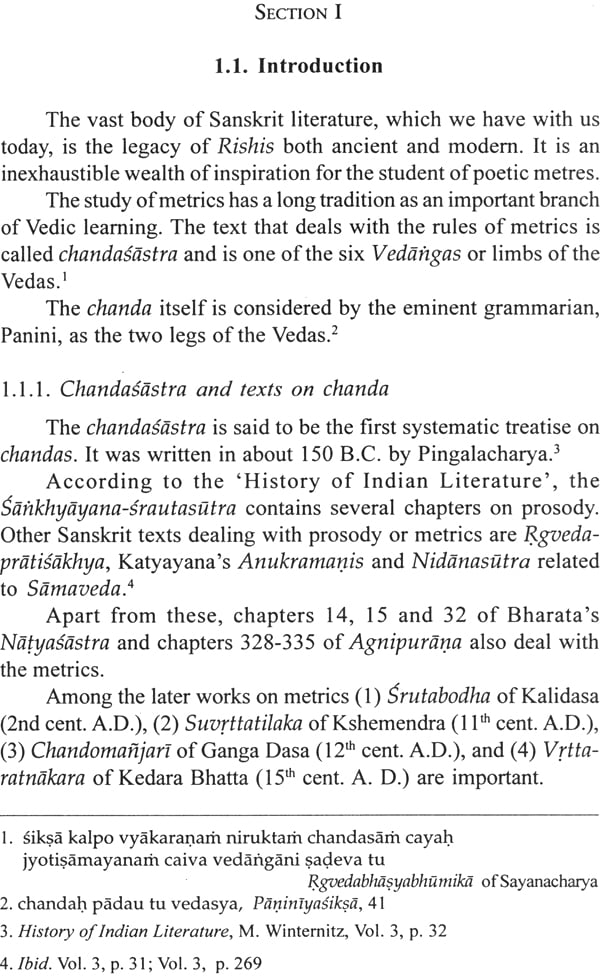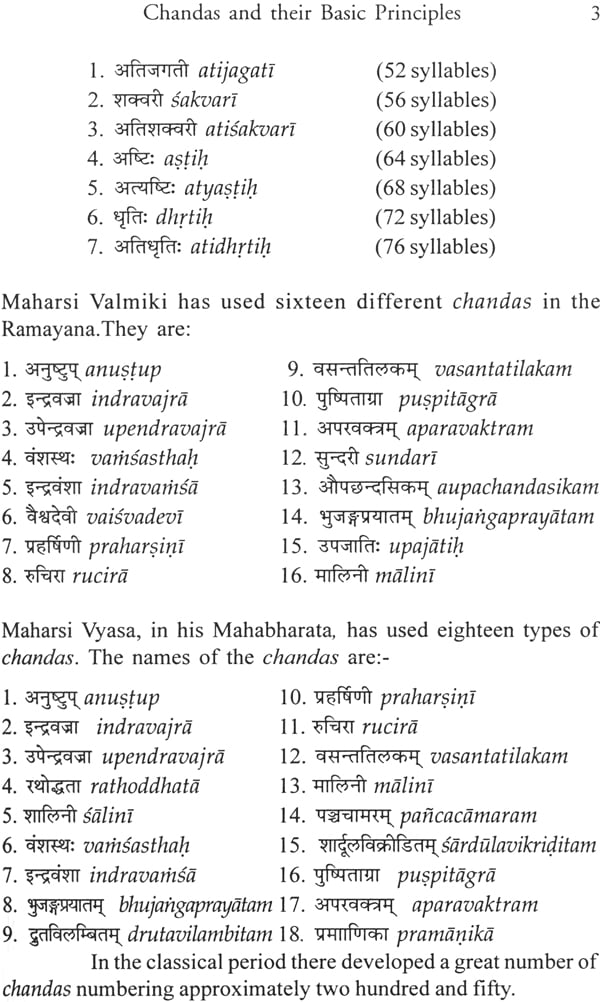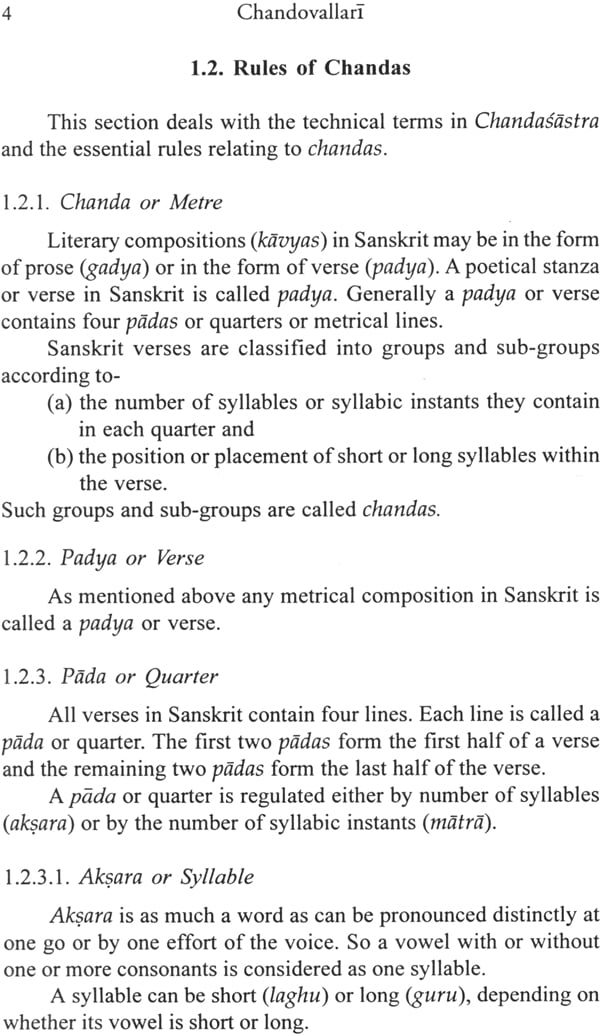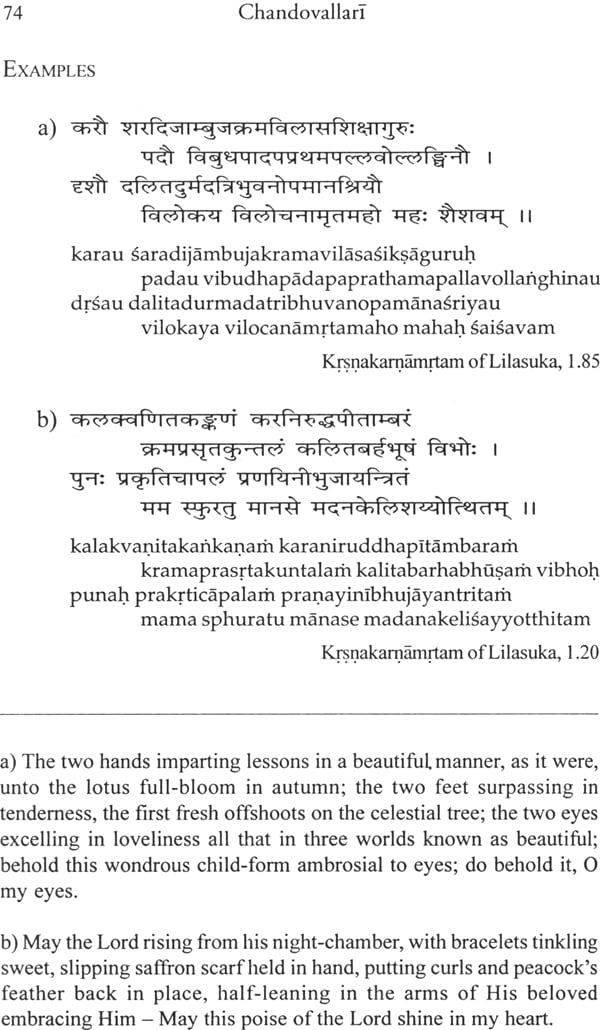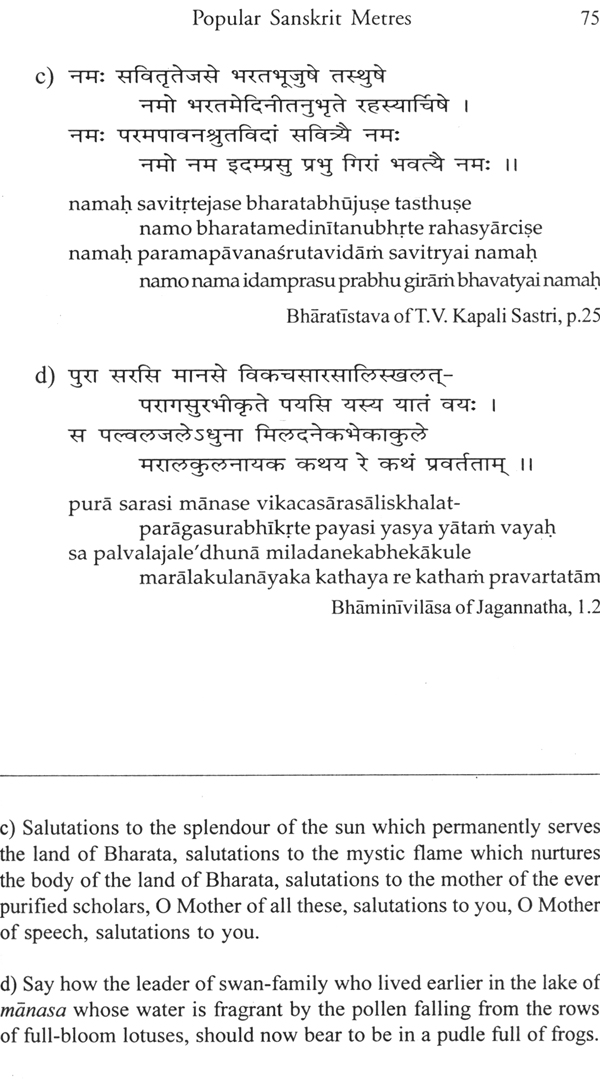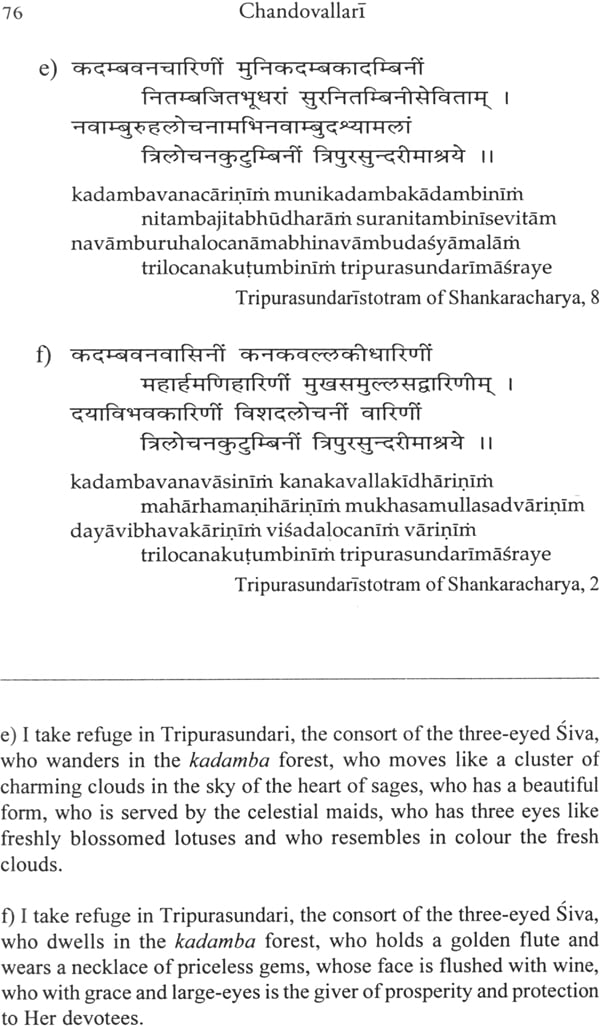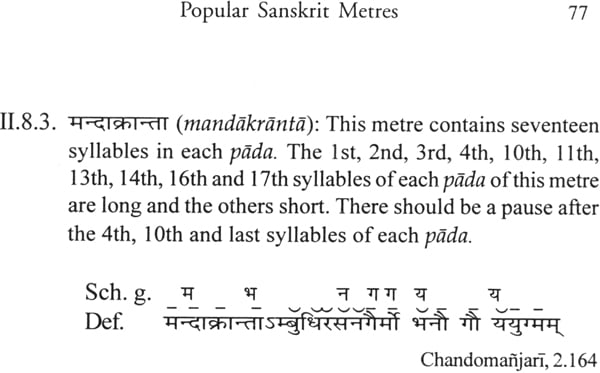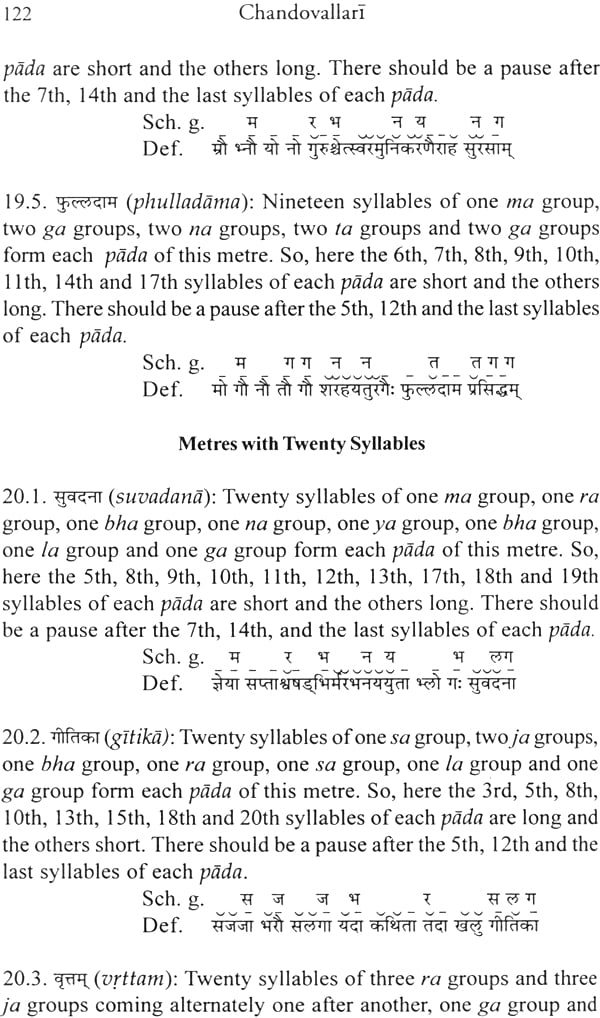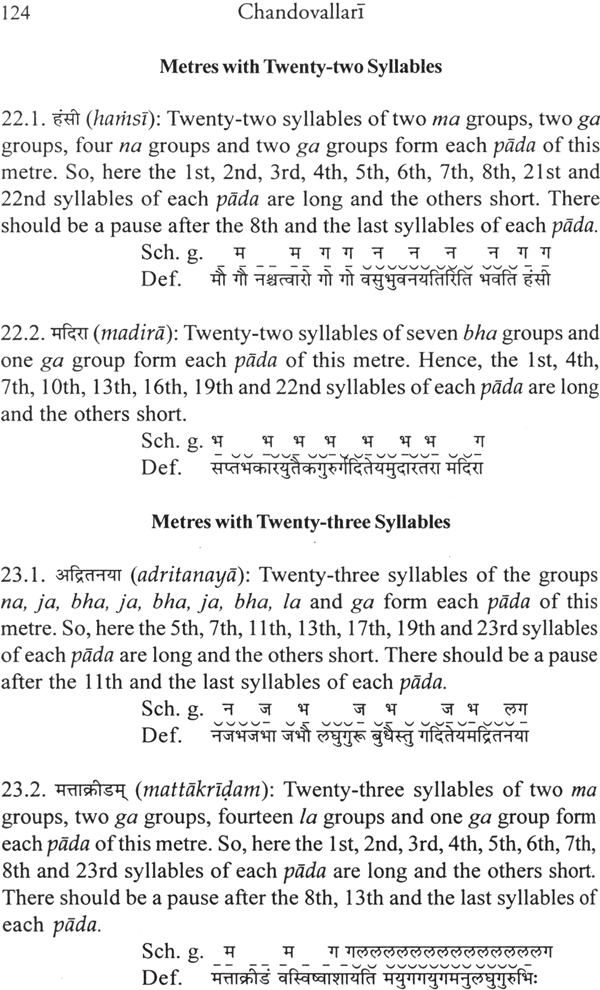
A Handbook of Sanskrit Prosody
Book Specification
| Item Code: | NAC327 |
| Author: | Sampadananda Mishra |
| Publisher: | Sri Aurobindo Ashram, Pondicherry |
| Language: | Sanskrit Text, Translation and Metrical Notes |
| Edition: | 2011 |
| ISBN: | 9788170603153 |
| Pages: | 142 |
| Cover: | Paperback |
| Other Details | 7.2 Inch X 4.8 Inch |
| Weight | 160 gm |
Book Description

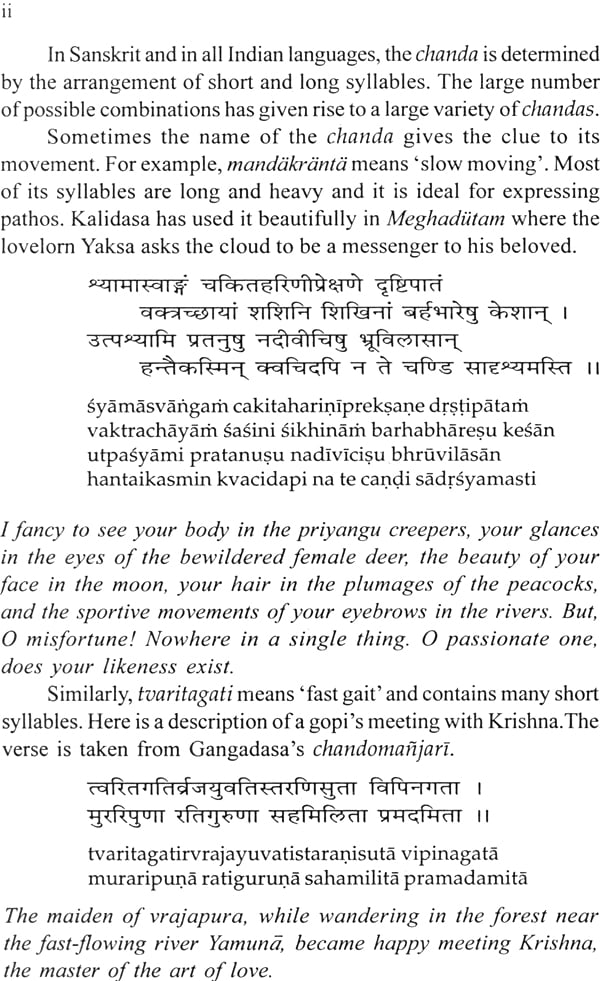
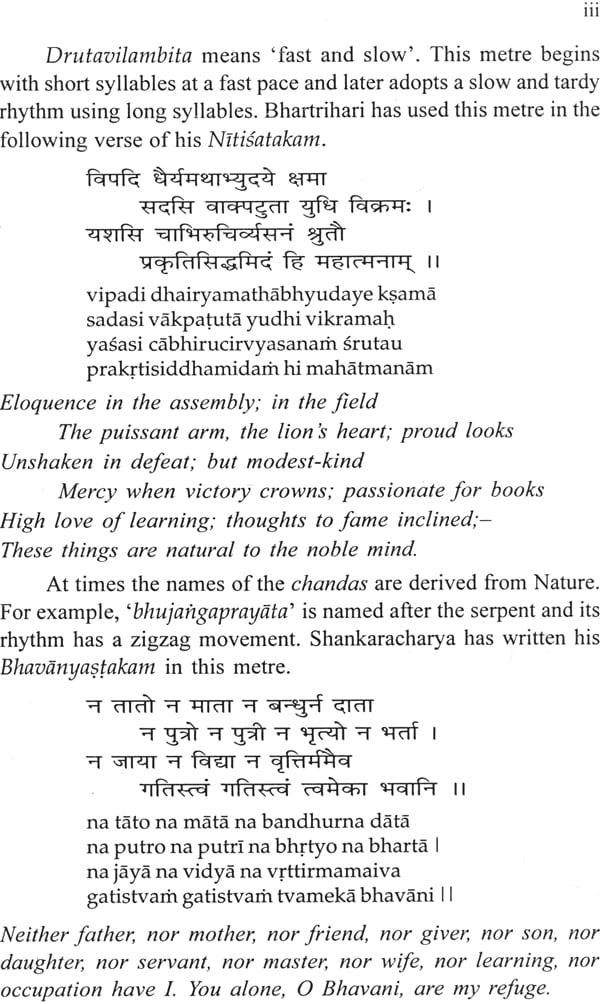

Almost all the padyakavyas or poetical compositions in Sanskrit follow a metrical structure. Therefore to understand and appreciate them the knowledge of metrics or chandas is essential. The current work aims to serve as an introduction to the main Sanskrit metres. The examples given and the several indexes provided would enable the interested reader to become familiar with the commonly used metres and to identify them.
This book is divided into two sections. The section one explains the place of chandas in Indian literature, the history of chandas and chandasastras, the classification of chandas and the rules governing them. The section two deals with nineteen major and well-known metres along with explanations and examples collected from various sources. Each sloka is followed by its English translation. This section begins with a verse of Valmiki, the adikavi, through an example of Anustup metre, and ends with a verse of Kalidasa, one of the greatest poets of Sanskrit literature, through an example of Sragdhara.
In section three there are several appendixes. The first appen- dix gives the list of 26 genera or classes of chandas. The second appendix contains the alphabetical list of ganas or syllabic feet. The third appendix is an alphabetical list of the names of 121 chandas. The fourth appendix presents the explanation of all the 121 chandas along with their definitions and scheme of ganas. The second, third and the fourth appendixes are all interlinked. The fifth appendix has a note on matra chandas or metres regulated by syllabic instants. Apart from these five appendixes this section also has indexes to the names of the chandas and their meanings, examples to illustrate all varieties of upajati metre, all the sources from which examples appearing in the book are taken, all the slokas appearing in this book and a list of books referred to in this presentation.
| Preface | i |
| Introduction | v |
| Chandas and their Significances | vi |
| SECTION I. Chandas and their Basic Principles | |
| Introduction | |
| Chandasastra and the texts on chanda | 1 |
| Use of chandas | 2 |
| Rules of Chanda | |
| Chanda or Metre | 4 |
| Padya or Verse | 4 |
| Pdda or Quarter | 4 |
| Aksara or Syllables | 4 |
| Laghu or Short Syllables | 5 |
| Guru or Long Syllables | 5 |
| Matra or Metrical-Unit | 6 |
| Verse Classification | 6 |
| Vrttachanda | 6 |
| Samavrtta or even metre | 6 |
| Ardhasamavrtta or Half-even Metres | 8 |
| Visamavrtta or Uneven Metres | 8 |
| Jati | 9 |
| Yati or Metrical Pause | 10 |
| Sentential Pause | 10 |
| Harmonic Pause | 10 |
| Scanning of the chandas | 10 |
| Gana | 10 |
| Classification of ganas | 11 |
| Description of ganas | 11 |
| Schematic Representation of the gana | 11 |
| Conclusion | 12 |
| SECTION II. Popular Sanskrit Metres | |
| Metres with Eight Syllables | |
| Anustup | 13 |
| Metres with Eleven Syllables | |
| Indravajra | 17 |
| Upendravajra | 21 |
| Upajatih | 25 |
| Salini | 29 |
| Rathoddhata | 33 |
| Metres with Twelve Syllables | |
| Vamsasthavilam | 37 |
| Bhujangaprayatam | 41 |
| Totakam | 45 |
| Metres with Thirteen Syllables | |
| Praharsini | 49 |
| Metres with Fourteen Syllables | |
| Vasantalilakam | 53 |
| Metres with Fifteen Syllables | |
| Malini | 57 |
| Tunakam | 61 |
| Metres with Sxteen Syllables | |
| Pancacamaram | 65 |
| Metres with Seventeen Syllables | |
| Sikharini | 69 |
| Prthvi | 73 |
| Mandakranta | 77 |
| Metres with Nineteen Syllables | |
| Sardulavikriditam | 81 |
| Metres with Twentyone Syllables | |
| Sragdhara | 85 |
| SECTION III. Appendixes | |
| Appendix I | 89 |
| Appendix II | 90 |
| Appendix III | 94 |
| Appendix IV | 98 |
| Matra Chandas or Metres of Syllabic Instants | 126 |
| Names of the Chandas and their Meanings | 130 |
| Examples of Fourteen Varities of Upajati | 134 |
| Index to the Sources of the Examples ... | 137 |
| Shloka Index | 140 |
| Bibliography | 152 |
